TPI-Injected 2Ts: FAQs Answered
The all-new fuel-injected two-stroke (“TPI”) enduro models introduced by both KTM and Husqvarna for 2018 come with a long list of claimed benefits: reduced fuel consumption, automatic elevation compensation, enhanced rideability and performance, reduced emissions, smooth engine behavior, reduced fuel evaporation, easier starting, smoother idling, no pre-mixed fuel, no flooding if the bike is flipped upside-down, etcetera. And our first taste test of KTM’s 2018-model 250 and 300EXC TPI (Transfer Port Injection) machines at the recent international media launch in Austria confirmed that these new bikes legitimately lay claim to many of these benefits.
But what about the implications for reliability, maintenance, mapping or the host of other questions that the introduction of this new technology on both KTM’s and Husqvarna’s two-strokes has raised? Well, here are some answers to the most commonly asked questions about these fascinating new TPI bikes:
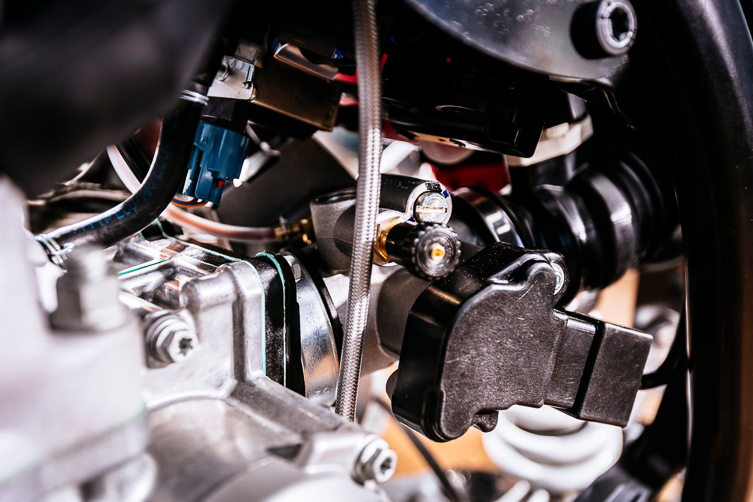
HOW LONG HAS KTM BEEN DEVELOPING THESE TWO-STROKE FUEL-INJECTION ENGINES?
KTM has been working and developing fuel-injected two-stroke engines for 10 years.
TWO-STROKES ARE KNOWN FOR THEIR SIMPLICITY TO MAINTAIN. WILL IT BE MORE DIFFICULT TO CHANGE A CYLINDER OR PISTON ON THE TPI MODELS?
KTM’s challenge was to find a perfect injector position, but the internal design of the barrel has not changed much, so it remains simple and easy to maintain. A piston change, for example, is still as easy as it previously was. Now, to remove the barrel, the only additional step required is the disconnecting of two electrical connectors and the fuel line that runs to the injectors. This fuel line uses a simple dry-break connector, as used on KTM’s fuel-injected four-strokes. The addition of the oil tank makes it a little more cluttered around the top shock mount, but as far as we can tell, access to key components for maintenance or adjustment has not been materially affected.
WHY DID KTM DECIDE TO NOT USE A DIRECT INJECTION DESIGN?
KTM did a lot of testing using direct injection systems, but decided they were too complex and changed the behaviour of the bike too much. KTM’s focus was on ensuring the TPI bikes’ rideability and engine characteristics remain as close as possible to their well-established carbureted engines, while eliminating the disadvantages of the carb engines (the need to pre-mix the fuel with oil, the need to re-jet to suit different altitude and humidity, etc).
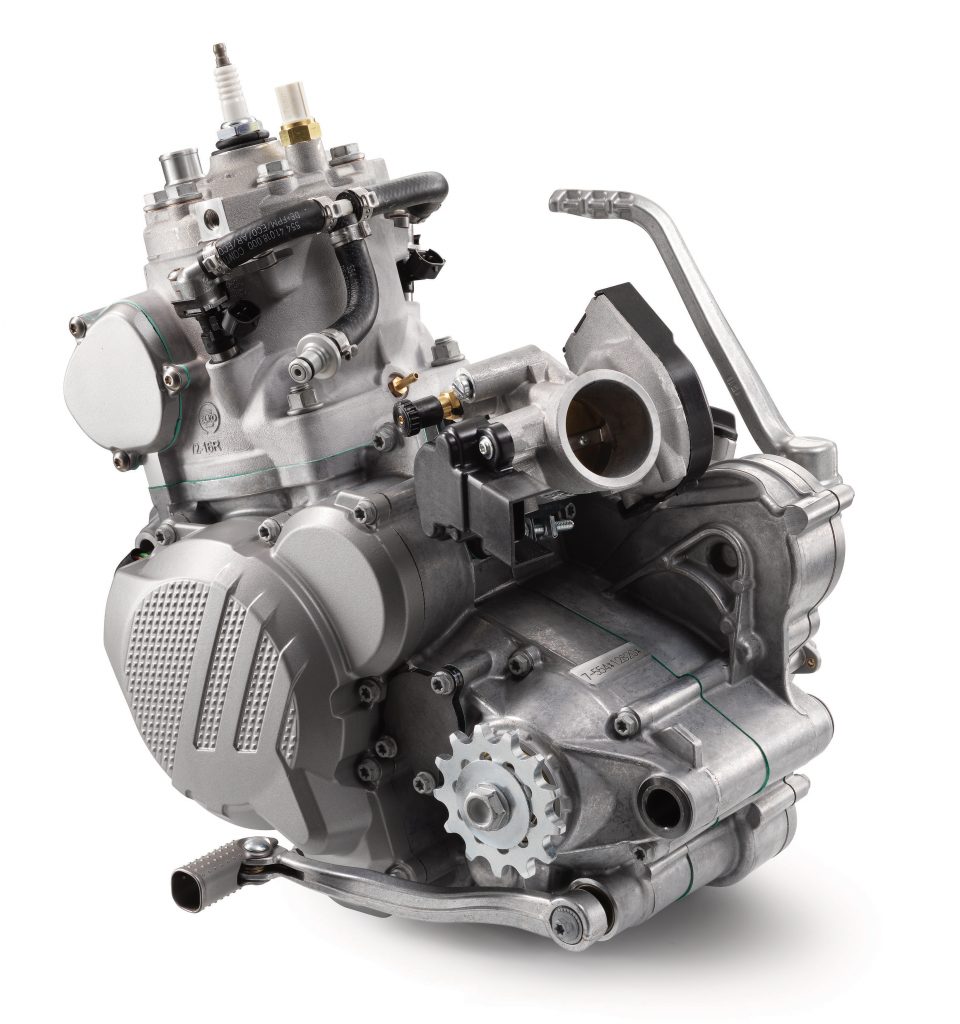
ARE THE SERVICE INTERVALS ANY DIFFERENT?
No, KTM tells us that recommended service intervals for the TPI and carbureted models are the same or very similar
WHAT ABOUT THE OVERALL RISK OF FAILURE? WITH THIS TPI SYSTEM, SURELY PROBLEMS ARE MORE LIKELY.
KTM acknowledges that the system is more complex and involves more parts (there’s a fuel pump, oil pump, injectors and sensors that are not required on carburetted models). But they also make the point they’ve tested the system extensively and found no issues, and that many of the new hardware parts are the same or similar to those that have proven their reliability on their four-stroke models.
CAN THE BIKE BE RE-MAPPED TO ADJUST THE POWER? AND WHAT ABOUT TRACTION CONTROL?
There is an alternative (softer, traction) map already programmed into the bike, which can be activated by disconnecting the mapping cable behind the headlight (a map selector switch only comes as standard on the Six Days models, or can be purchased from KTM’s PowerParts range for standard models). As with KTM’s four-strokes, it is not possible to create custom maps for the 2018 two-strokes. And despite many people thinking that the more sophisticated EMS required for these injected two-strokes would also pave the way for traction control, KTM’s design team says traction control for their two-stroke models is at least
three years off.
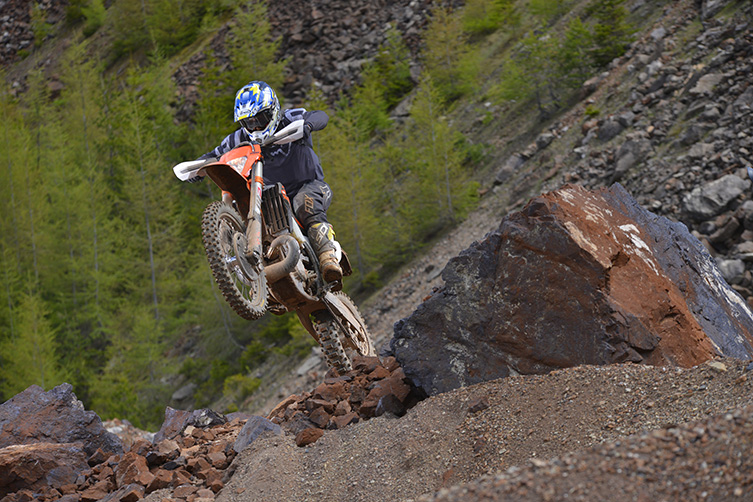
WHAT IS THE DIFFERENCE IN FEELING BETWEEN THE TPI AND THE CARBURETED MODELS WHEN RIDING?
It is very difficult to tell the difference. The TPI bikes simply feel like a perfectly set-up carbureted bike, no matter what the change in altitude. The 2018 TPI models start easier, idle more smoothly, and rarely emit any smoke or pungent two-stroke smell. Their overall power character doesn’t feel much different from the predecessors’, though the TPI bikes’ engines are noticeably smoother and more responsive to throttle inputs, and they chug up hills at super-low revs without the assistance of the clutch. Collectively, this gives them a really torquey, tractable feel. That said, the 250 engine doesn’t feel quite as lively as its carb-fed predecessor at high revs.
WHICH MODELS GET TPI?
At this stage, only the 250 and 300EXC enduro models (and the up-specced Six Day machines based off them) get the new TPI fuel-injection system.
IS THE CARBURETED MODEL STILL BEING MADE?
For some markets and in limited quantities, yes.

WILL KTM’S 250SX MODEL BE FUEL-INJECTED IN THE FUTURE?
The impetus for the move to an EFI system for KTM’s two-strokes was the Euro 4 emission regulations, which come into effect for 2017. But because Euro 4 applies only to road-going or registered vehicles, KTM has only fitted the TPI fuel injection system to its enduro bikes. Their SX models will remain carb-fed (for the time being, anyway).
CAN WE EXPECT TO SEE FUEL-INJECTED TWO-STROKE STREET BIKES FROM KTM IN THE FUTURE?
Not in the immediate future. The engines developed are specifically designed for off-road use. Street bike engines are a completely different scenario.
WILL THE TPI MACHINES BE HOMOLOGATED FOR ROAD REGISTRATION, AND DO THEY ADHERE TO EURO 4 REGULATIONS?
Yes, the TPI models fulfil the current Euro 4 regulations and can be fully road registered (in Europe, USA, Asia and Australia).
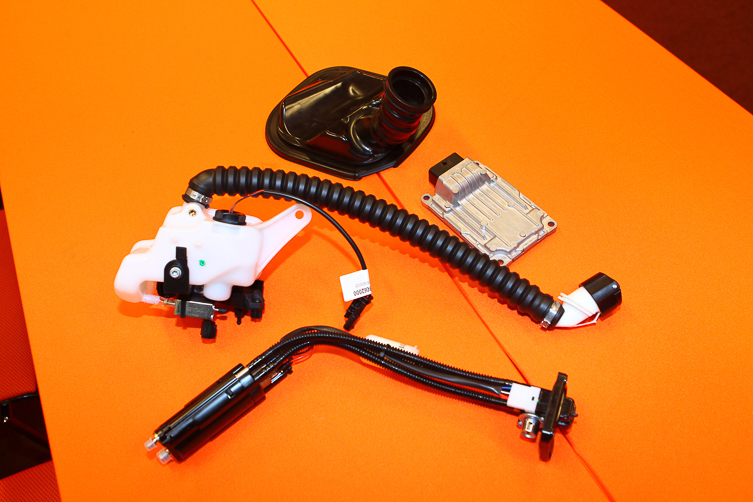
WHAT ARE THE COSTS OF TPI – IN TERMS OF PRICE AND WEIGHT?
Getting rid of the carb saves some weight, but by the time to TPI bikes are fitted with the new oil tank, fuel pump and associated sensors and electrical system mods, there’s a net increase in weight of 2.5-3kg. Also, KTM’s enormous investment into this technology will ultimately be paid for by the consumer. KTM Australia’s Jeff Leisk says he expects the 2018-model 250 and 300EXC TPI bikes (which arrive in Australia in early 2018) will retail for approximately $1000 more than their carb-fed equivalents (which will start arriving in Australia in July). In Europe, the TPI bikes are 450 to 500 Euros more expensive than their carb-fed predecessors. This equates to AUD $650-$750). According to KTM, “This is not a dramatic increase, considering the technology.”
HOW BIG IS THE FUEL SAVING ON THE TPI MODELS?
Depending on the riding style and terrain, the TPI models are claimed to use between 30 and 40% less fuel.
WHAT IS THE FUEL-TO-OIL RATIO ON THE TPI MODELS?
The oil is supplied by the oil pump, which regulates the amount according to the load and RPM. On average, that is done at a ratio of 80:1 – that is, 1 litre of oil per 80 litres of fuel. On carbureted models, that ratio was 60:1. Plus the carb bikes require a pre-mix solution.

WHAT IS THE OIL CAPACITY OF THE TPI MODELS?
It’s 700ml, which is claimed to be enough for at least five fuel tank refills.

DO THE TPI MODELS REQUIRE A SPECIAL KIND OF OIL?
No. The guys from Motorex were at the launch and explained that they were prepared to custom-develop a specific oil for the TPI machines. But both KTM and Motorex now recommend the TPI bikes use the same Motorex oil (Cross Power 2T) as you did to pre-mix your fuel with the carbureted two-strokes.
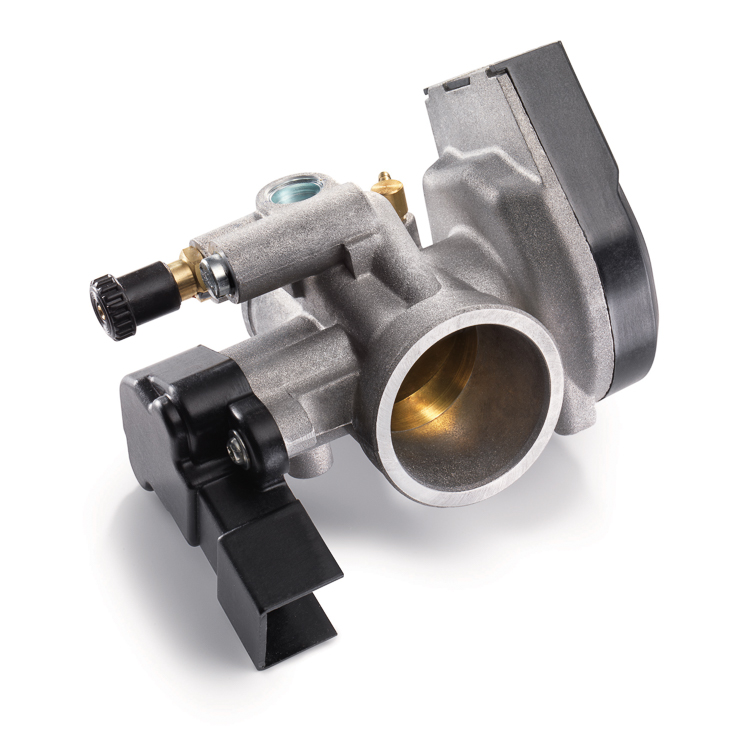
CAN THE TPI MODELS BE RUN WITH PRE-MIXED FUEL INSTEAD OF A SEPARATE OIL SUPPLY?
No! If you try this, the crankshaft bearings would not get sufficient lubrication.
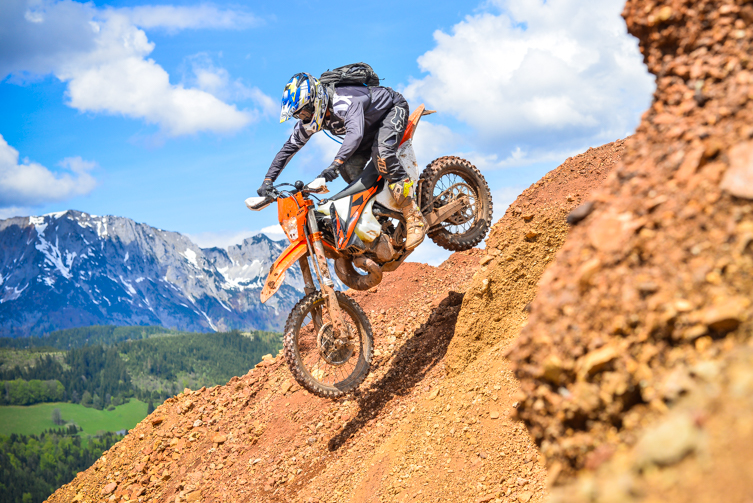
IS THERE LESS SMOKE COMPARED TO PRE-MIXED FUEL?
Besides reduced fuel consumption, the TPI models are claimed to emit up to 50% less smoke, thanks to the separate oil supply. In our experience, that’s a conservative estimate.
WHAT IS THE FUEL CAPACITY OF THE TPI MODELS?
The capacity is slightly reduced (to 9 litres) due to the new fuel pump inside the tank, but the fuel range is much higher due to the lower consumption (it is now claimed to be much closer to the four-strokes’).
WHEN WILL THE FACTORY TEAM RACE WITH THE TPI MODELS?
KTM says their factory racing teams will compete with the TPI models from the launch onwards. But we did notice that very few factory riders were using the TPI bikes at last weekend’s 2017 ErzbergRodeo.

WHO WAS INVOLVED IN THE DEVELOPMENT OF THE TPI MODELS?
KTM’s main test riders were Lars Enöckl and Andreas Lettenbichler. The TPI machines’ first major (public) test was at the Roof of Africa race in 2016 – one of the most challenging races in terms of heat and altitude changes.
WILL THE KTM 125XC-W AND KTM 150XC-W TWO-STROKES BECOME TPI MODELS IN THE FUTURE?
There are other models planned, but KTM is yet to confirm which models will receive TPI and when.
WHAT WILL THE COST DIFFERENCE BE ROUGHLY BETWEEN THE TPI MODELS AND THE CARBURETTED MODELS?
Based on retail prices in Germany, the difference is around 450-500 Euros. In Australia, the 2018-model 250 and 300EXC TPI bikes are expected to retail for approximately $1000 more than their carb-fed equivalents.
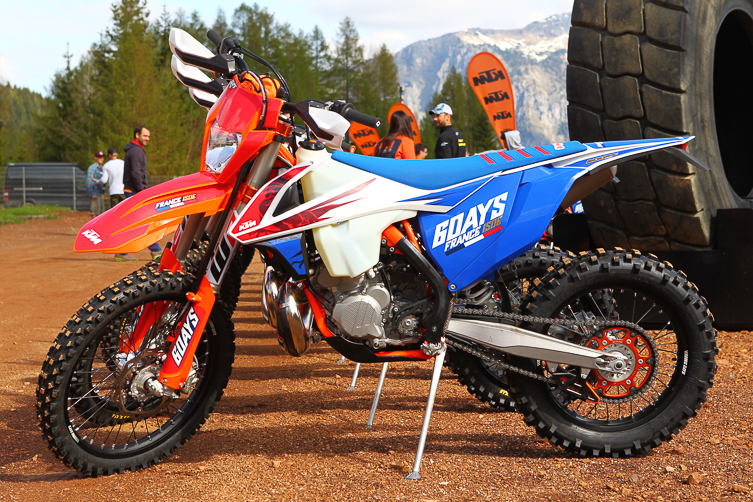
WHEN WILL THE TPI MACHINES BE AVAILABLE?
TPI models will begin to arrive in European dealers in July, but not until early 2018 in Australia. Their carb-fed, 2018-model equivalents will start arriving in Australia in July.
Related Content
-
🎥 ONBOARD: 2017 RED BULL HARE SCRAMBLE
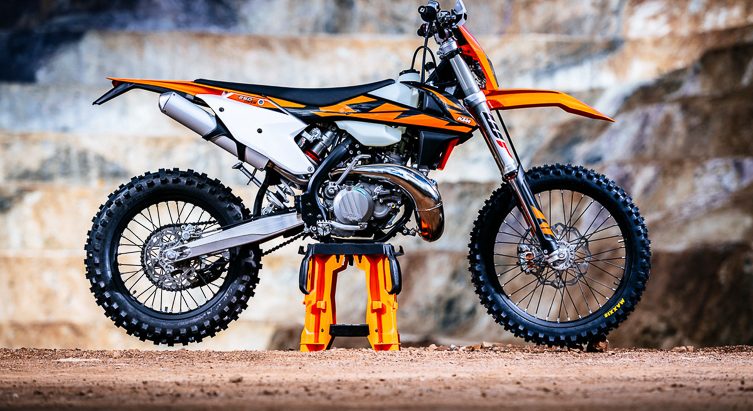
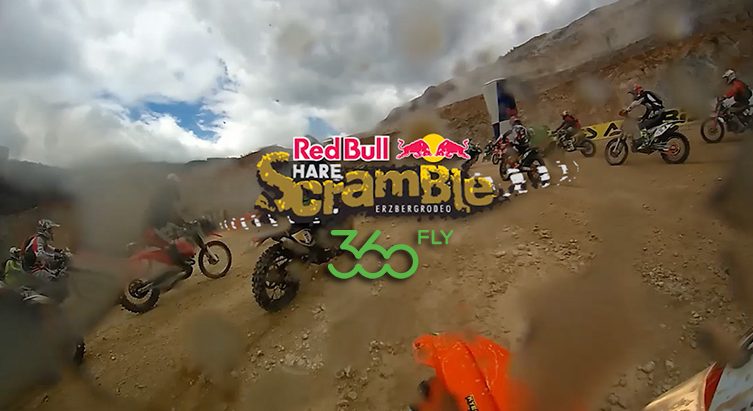
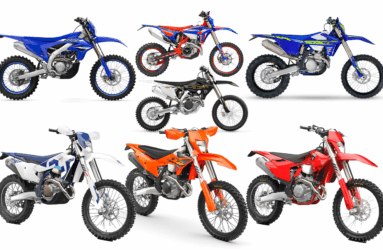

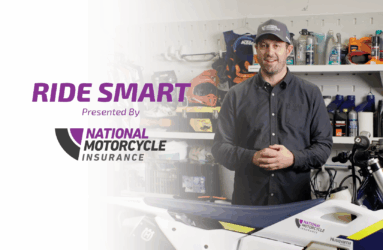
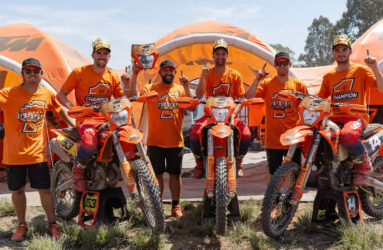


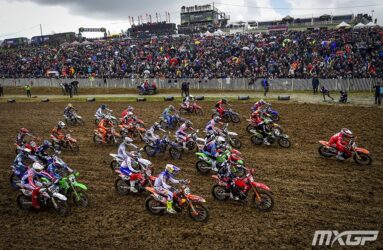

Be the first to comment...